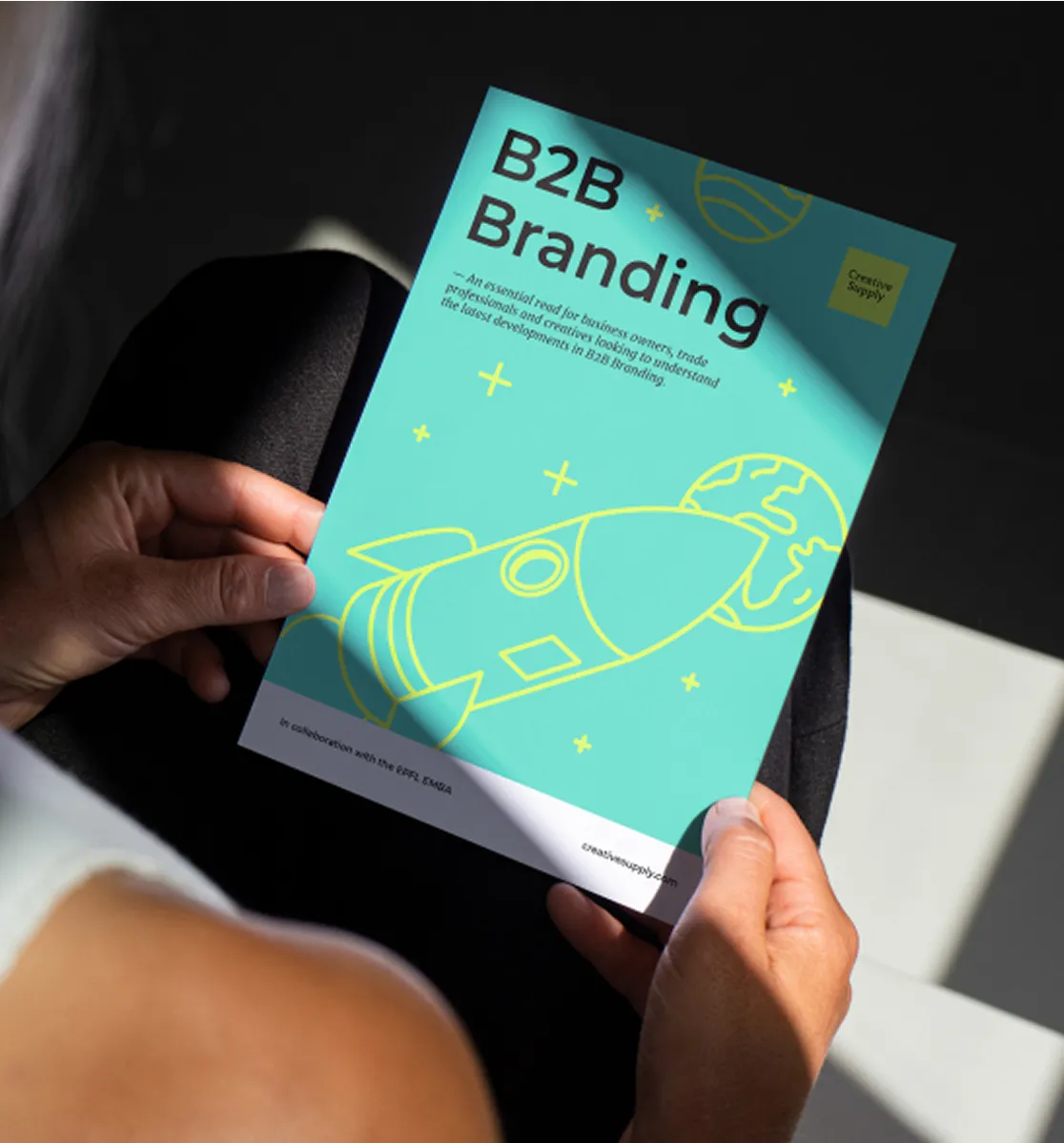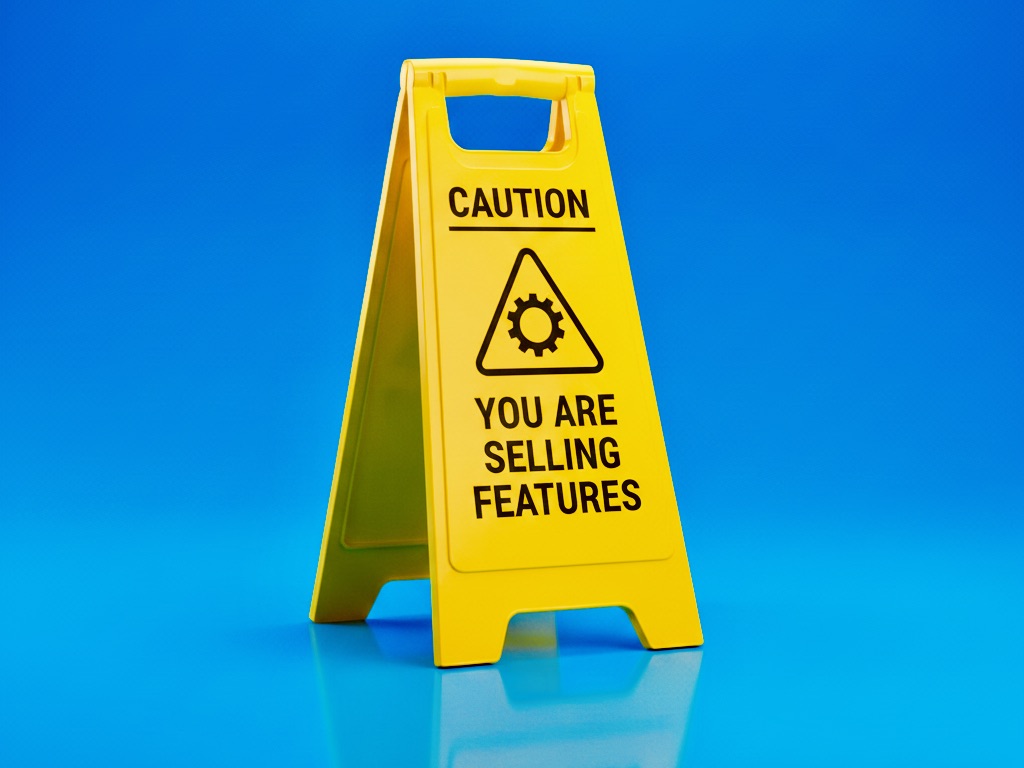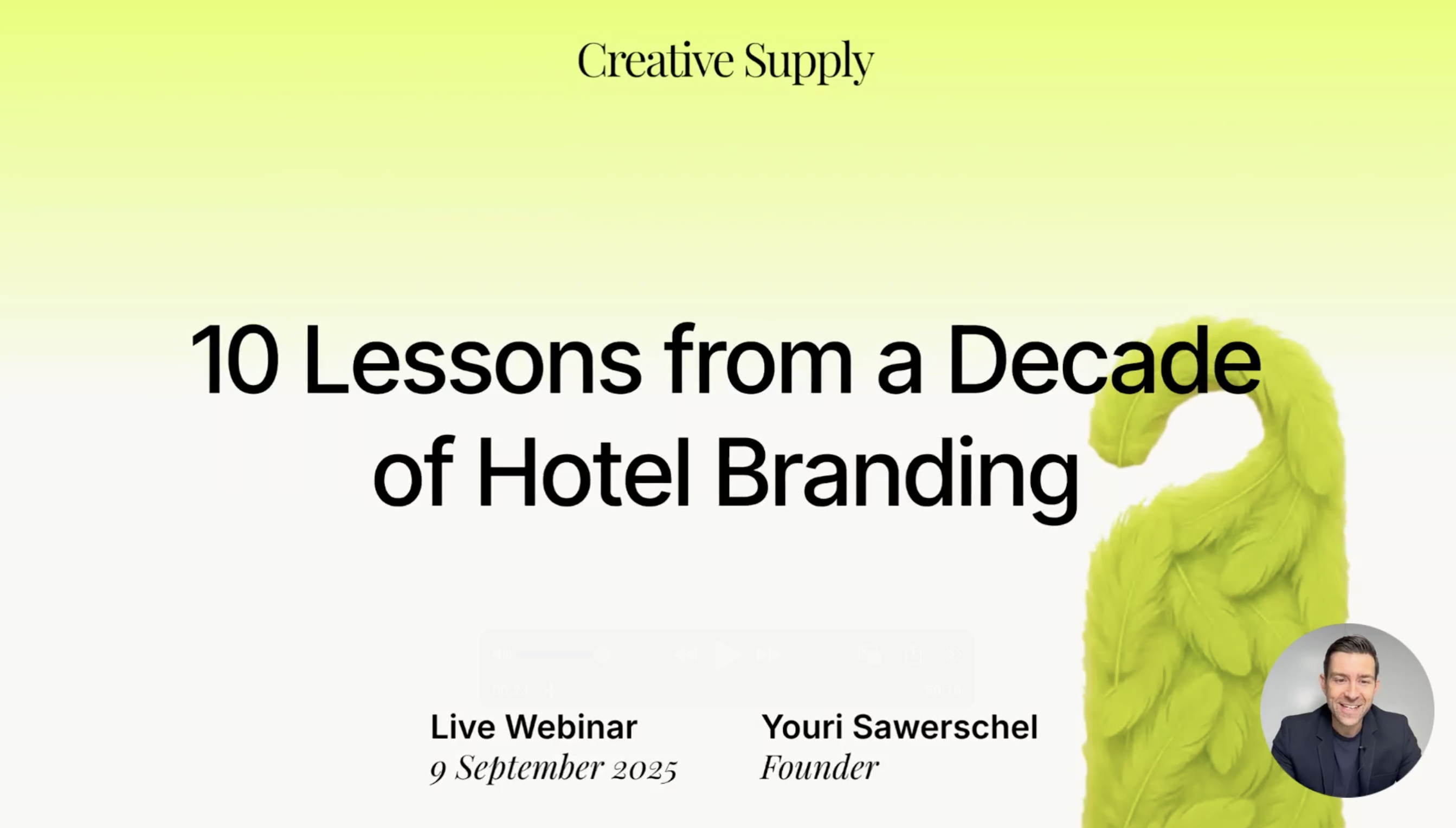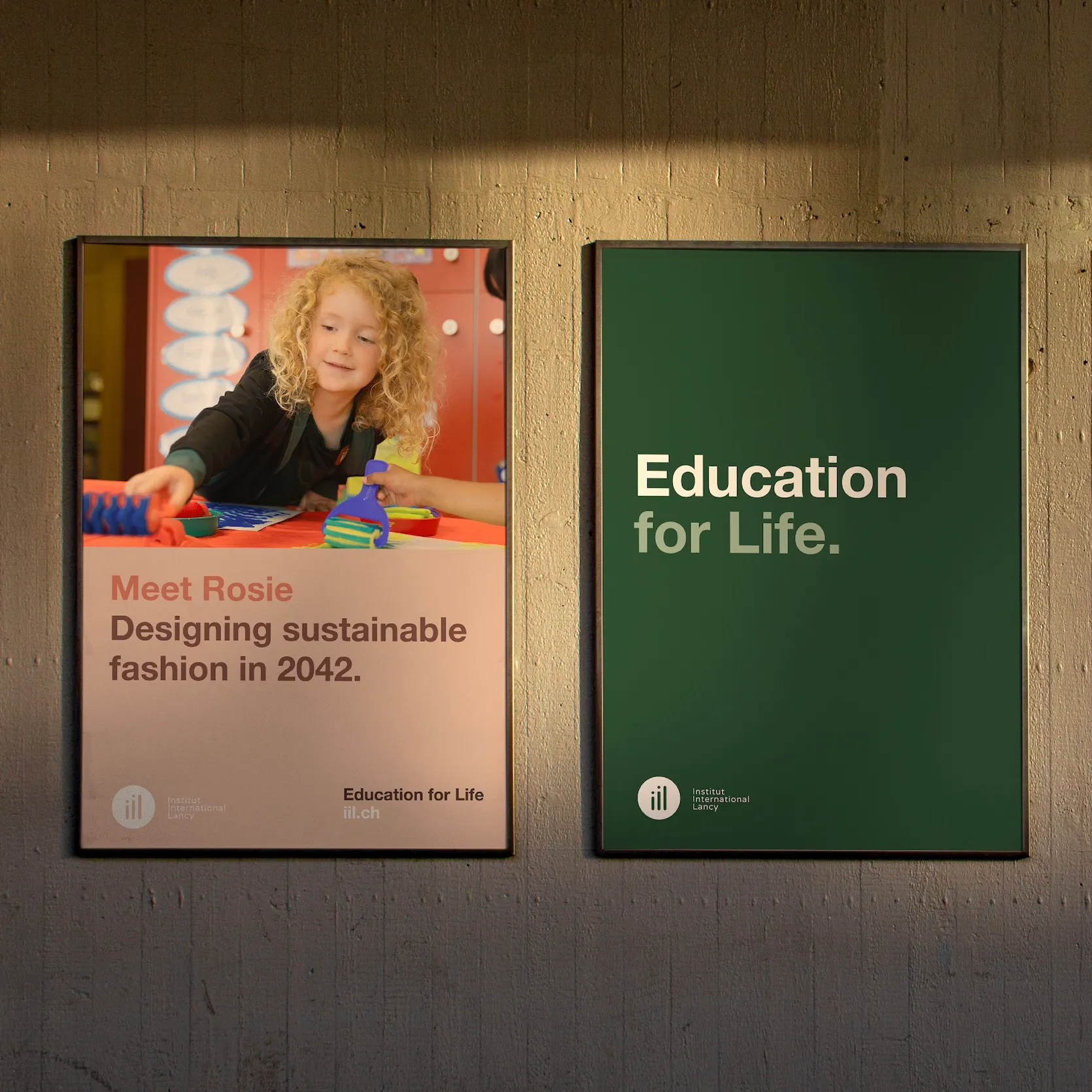From Content to Authority: Transforming B2B Communication
B2B content shouldn’t just inform, it should position your brand clearly and credibly. When rooted in brand strategy, shaped by consistent communication themes, and designed for reusability, content becomes a key driver of brand authority and differentiation.

B2B brands today are publishing more content than ever. Reports, videos, social media posts, podcasts, newsletters — all produced in the name of brand visibility. But brand visibility alone is not value. Too often, content becomes disconnected from brand strategy, resulting in diluted messaging, wasted resources, and disengaged audiences.
At Creative Supply, we encourage B2B companies to move beyond content volume and focus on content that builds strategic authority. The goal is not to say more, but to say what matters and say it well. As a brand, you want to promote content to ultimately “own” certain communication themes.
In short, impactful content should:
- Be rooted in your brand positioning
- Align with clear communication themes
- Be tailored to your audience in both form and format
- Be scalable and reusable across multiple touchpoints
Impactful Content Starts with Brand Positioning
In B2B, content is only impactful when it reflects and reinforces your brand positioning. Without this foundation, content risks becoming fragmented, forgettable, or generic. Your brand positioning defines what you stand for, how you differ from competitors, and why your offer matters to your audience. High-impact B2B content should be a natural extension of that position.
For instance, a company positioned as an innovation leader in industrial software should consistently produce content that reflects its expertise, vision, and technological foresight. That might include trend reports, use case explorations, or behind-the-scenes glimpses into R&D. When content stems from brand positioning, it becomes a strategic asset — not just a marketing deliverable.
To operationalise this, B2B companies can develop a content playbook that outlines the relationship between brand pillars and communication topics. This ensures that every article, video, or presentation ties back to what the brand wants to be known for. It also avoids the all-too-common trap of reactive content production based on fleeting trends, which often leads to diluted brand perception.

Build Around Clear Communication Themes
Even with strong brand positioning, content can fail if it lacks thematic coherence. Strategic communication themes act as the connective tissue between brand positioning and content planning. They offer a framework for what your brand talks about, and just as importantly, what it doesn’t.
In B2B contexts, such themes might include sustainable manufacturing, data-driven decision-making, or supply chain resilience. The key lies in selecting a limited number of topics that are both closely aligned with your business model and directly address the priorities and concerns of your target audience.
Well-defined themes also help establish thought leadership over time. They enable editorial consistency across formats and channels, allowing your brand to “own” specific conversations in your industry. This is particularly valuable in niche B2B sectors where reputation is built slowly and credibility matters more than visibility. From a practical standpoint, themes should be documented, stress-tested against your positioning, and regularly reviewed to ensure they remain aligned with market needs and internal priorities.

Adapt Form and Format to Your Audience’s Reality
In B2B communication, the effectiveness of content is determined not just by what you say, but how you deliver it. The form and format of your content should match your audience’s information consumption habits, technical fluency, and professional context.
A 2-minute explainer video might resonate with time-pressed executives, while a downloadable white paper could better serve procurement officers or technical leads conducting deeper due diligence. The same insight can be expressed in multiple ways depending on the audience and use case.
This audience-centric mindset also applies to tone of voice, visual presentation, and platform selection. Design matters, even in highly technical fields. If your brand wants to project clarity, confidence, and reliability, your content must look and read that way. Sloppy formatting, overly complex language, or off-brand visuals send the opposite message. Designing for audience fit is about removing friction and enhancing usability.
Ultimately, form and function must work together to elevate the experience and perception of your brand.

Make It Scalable and Reusable Across Touchpoints
Your content should be developed with scalability in mind, meaning it must be adaptable across various touchpoints, from sales decks and webinars to email campaigns and trade show materials. A well-crafted article can serve as a compelling reference in a client pitch, while a product explainer video can be re-edited into short-form content for social media. Smart content planning multiplies the value of each idea and maximises ROI on creative efforts.
Scalability also fosters cross-functional alignment, particularly between marketing, sales, and HR, helping to maintain a consistent brand narrative throughout the entire customer journey. To support this, B2B brands should consider investing in modular content systems and internal content libraries. These tools make it easier to streamline content production and ensure messaging consistency without reinventing the wheel every time.
Moreover, reusable content assets reduces the pressure to constantly produce new material, freeing up resources to focus on quality and strategic alignment rather than quantity.

Final Thoughts
When your audience knows what to expect and it’s always valuable, they come back. This trust is only built when your content is grounded in your brand positioning, ensuring that every message aligns with your narrative and resonates with your audience.
In practice, this means publishing less frequently, but with greater intention, clarity, and strategic focus. When thoughtfully designed, content becomes more than a communication tool; it becomes a driver of brand authority. And in the B2B, authority is earned through consistency, relevance, and original thinking — not volume.
Looking to Make Your Content Work for Your Brand?
At Creative Supply, we help B2B brands rethink their communication strategy through the lens of branding, customer experience and digital design.
👉 Contact us to discuss how to take your brand communication to the next level.
From Content to Authority: Transforming B2B Communication

B2B brands today are publishing more content than ever. Reports, videos, social media posts, podcasts, newsletters — all produced in the name of brand visibility. But brand visibility alone is not value. Too often, content becomes disconnected from brand strategy, resulting in diluted messaging, wasted resources, and disengaged audiences.
At Creative Supply, we encourage B2B companies to move beyond content volume and focus on content that builds strategic authority. The goal is not to say more, but to say what matters and say it well. As a brand, you want to promote content to ultimately “own” certain communication themes.
In short, impactful content should:
- Be rooted in your brand positioning
- Align with clear communication themes
- Be tailored to your audience in both form and format
- Be scalable and reusable across multiple touchpoints
Impactful Content Starts with Brand Positioning
In B2B, content is only impactful when it reflects and reinforces your brand positioning. Without this foundation, content risks becoming fragmented, forgettable, or generic. Your brand positioning defines what you stand for, how you differ from competitors, and why your offer matters to your audience. High-impact B2B content should be a natural extension of that position.
For instance, a company positioned as an innovation leader in industrial software should consistently produce content that reflects its expertise, vision, and technological foresight. That might include trend reports, use case explorations, or behind-the-scenes glimpses into R&D. When content stems from brand positioning, it becomes a strategic asset — not just a marketing deliverable.
To operationalise this, B2B companies can develop a content playbook that outlines the relationship between brand pillars and communication topics. This ensures that every article, video, or presentation ties back to what the brand wants to be known for. It also avoids the all-too-common trap of reactive content production based on fleeting trends, which often leads to diluted brand perception.

Build Around Clear Communication Themes
Even with strong brand positioning, content can fail if it lacks thematic coherence. Strategic communication themes act as the connective tissue between brand positioning and content planning. They offer a framework for what your brand talks about, and just as importantly, what it doesn’t.
In B2B contexts, such themes might include sustainable manufacturing, data-driven decision-making, or supply chain resilience. The key lies in selecting a limited number of topics that are both closely aligned with your business model and directly address the priorities and concerns of your target audience.
Well-defined themes also help establish thought leadership over time. They enable editorial consistency across formats and channels, allowing your brand to “own” specific conversations in your industry. This is particularly valuable in niche B2B sectors where reputation is built slowly and credibility matters more than visibility. From a practical standpoint, themes should be documented, stress-tested against your positioning, and regularly reviewed to ensure they remain aligned with market needs and internal priorities.

Adapt Form and Format to Your Audience’s Reality
In B2B communication, the effectiveness of content is determined not just by what you say, but how you deliver it. The form and format of your content should match your audience’s information consumption habits, technical fluency, and professional context.
A 2-minute explainer video might resonate with time-pressed executives, while a downloadable white paper could better serve procurement officers or technical leads conducting deeper due diligence. The same insight can be expressed in multiple ways depending on the audience and use case.
This audience-centric mindset also applies to tone of voice, visual presentation, and platform selection. Design matters, even in highly technical fields. If your brand wants to project clarity, confidence, and reliability, your content must look and read that way. Sloppy formatting, overly complex language, or off-brand visuals send the opposite message. Designing for audience fit is about removing friction and enhancing usability.
Ultimately, form and function must work together to elevate the experience and perception of your brand.

Make It Scalable and Reusable Across Touchpoints
Your content should be developed with scalability in mind, meaning it must be adaptable across various touchpoints, from sales decks and webinars to email campaigns and trade show materials. A well-crafted article can serve as a compelling reference in a client pitch, while a product explainer video can be re-edited into short-form content for social media. Smart content planning multiplies the value of each idea and maximises ROI on creative efforts.
Scalability also fosters cross-functional alignment, particularly between marketing, sales, and HR, helping to maintain a consistent brand narrative throughout the entire customer journey. To support this, B2B brands should consider investing in modular content systems and internal content libraries. These tools make it easier to streamline content production and ensure messaging consistency without reinventing the wheel every time.
Moreover, reusable content assets reduces the pressure to constantly produce new material, freeing up resources to focus on quality and strategic alignment rather than quantity.

Final Thoughts
When your audience knows what to expect and it’s always valuable, they come back. This trust is only built when your content is grounded in your brand positioning, ensuring that every message aligns with your narrative and resonates with your audience.
In practice, this means publishing less frequently, but with greater intention, clarity, and strategic focus. When thoughtfully designed, content becomes more than a communication tool; it becomes a driver of brand authority. And in the B2B, authority is earned through consistency, relevance, and original thinking — not volume.
Looking to Make Your Content Work for Your Brand?
At Creative Supply, we help B2B brands rethink their communication strategy through the lens of branding, customer experience and digital design.
👉 Contact us to discuss how to take your brand communication to the next level.


From Content to Authority: Transforming B2B Communication
B2B content shouldn’t just inform, it should position your brand clearly and credibly. When rooted in brand strategy, shaped by consistent communication themes, and designed for reusability, content becomes a key driver of brand authority and differentiation.
B2B brands today are publishing more content than ever. Reports, videos, social media posts, podcasts, newsletters — all produced in the name of brand visibility. But brand visibility alone is not value. Too often, content becomes disconnected from brand strategy, resulting in diluted messaging, wasted resources, and disengaged audiences.
At Creative Supply, we encourage B2B companies to move beyond content volume and focus on content that builds strategic authority. The goal is not to say more, but to say what matters and say it well. As a brand, you want to promote content to ultimately “own” certain communication themes.
In short, impactful content should:
- Be rooted in your brand positioning
- Align with clear communication themes
- Be tailored to your audience in both form and format
- Be scalable and reusable across multiple touchpoints
Impactful Content Starts with Brand Positioning
In B2B, content is only impactful when it reflects and reinforces your brand positioning. Without this foundation, content risks becoming fragmented, forgettable, or generic. Your brand positioning defines what you stand for, how you differ from competitors, and why your offer matters to your audience. High-impact B2B content should be a natural extension of that position.
For instance, a company positioned as an innovation leader in industrial software should consistently produce content that reflects its expertise, vision, and technological foresight. That might include trend reports, use case explorations, or behind-the-scenes glimpses into R&D. When content stems from brand positioning, it becomes a strategic asset — not just a marketing deliverable.
To operationalise this, B2B companies can develop a content playbook that outlines the relationship between brand pillars and communication topics. This ensures that every article, video, or presentation ties back to what the brand wants to be known for. It also avoids the all-too-common trap of reactive content production based on fleeting trends, which often leads to diluted brand perception.

Build Around Clear Communication Themes
Even with strong brand positioning, content can fail if it lacks thematic coherence. Strategic communication themes act as the connective tissue between brand positioning and content planning. They offer a framework for what your brand talks about, and just as importantly, what it doesn’t.
In B2B contexts, such themes might include sustainable manufacturing, data-driven decision-making, or supply chain resilience. The key lies in selecting a limited number of topics that are both closely aligned with your business model and directly address the priorities and concerns of your target audience.
Well-defined themes also help establish thought leadership over time. They enable editorial consistency across formats and channels, allowing your brand to “own” specific conversations in your industry. This is particularly valuable in niche B2B sectors where reputation is built slowly and credibility matters more than visibility. From a practical standpoint, themes should be documented, stress-tested against your positioning, and regularly reviewed to ensure they remain aligned with market needs and internal priorities.

Adapt Form and Format to Your Audience’s Reality
In B2B communication, the effectiveness of content is determined not just by what you say, but how you deliver it. The form and format of your content should match your audience’s information consumption habits, technical fluency, and professional context.
A 2-minute explainer video might resonate with time-pressed executives, while a downloadable white paper could better serve procurement officers or technical leads conducting deeper due diligence. The same insight can be expressed in multiple ways depending on the audience and use case.
This audience-centric mindset also applies to tone of voice, visual presentation, and platform selection. Design matters, even in highly technical fields. If your brand wants to project clarity, confidence, and reliability, your content must look and read that way. Sloppy formatting, overly complex language, or off-brand visuals send the opposite message. Designing for audience fit is about removing friction and enhancing usability.
Ultimately, form and function must work together to elevate the experience and perception of your brand.

Make It Scalable and Reusable Across Touchpoints
Your content should be developed with scalability in mind, meaning it must be adaptable across various touchpoints, from sales decks and webinars to email campaigns and trade show materials. A well-crafted article can serve as a compelling reference in a client pitch, while a product explainer video can be re-edited into short-form content for social media. Smart content planning multiplies the value of each idea and maximises ROI on creative efforts.
Scalability also fosters cross-functional alignment, particularly between marketing, sales, and HR, helping to maintain a consistent brand narrative throughout the entire customer journey. To support this, B2B brands should consider investing in modular content systems and internal content libraries. These tools make it easier to streamline content production and ensure messaging consistency without reinventing the wheel every time.
Moreover, reusable content assets reduces the pressure to constantly produce new material, freeing up resources to focus on quality and strategic alignment rather than quantity.

Final Thoughts
When your audience knows what to expect and it’s always valuable, they come back. This trust is only built when your content is grounded in your brand positioning, ensuring that every message aligns with your narrative and resonates with your audience.
In practice, this means publishing less frequently, but with greater intention, clarity, and strategic focus. When thoughtfully designed, content becomes more than a communication tool; it becomes a driver of brand authority. And in the B2B, authority is earned through consistency, relevance, and original thinking — not volume.
Looking to Make Your Content Work for Your Brand?
At Creative Supply, we help B2B brands rethink their communication strategy through the lens of branding, customer experience and digital design.
👉 Contact us to discuss how to take your brand communication to the next level.









